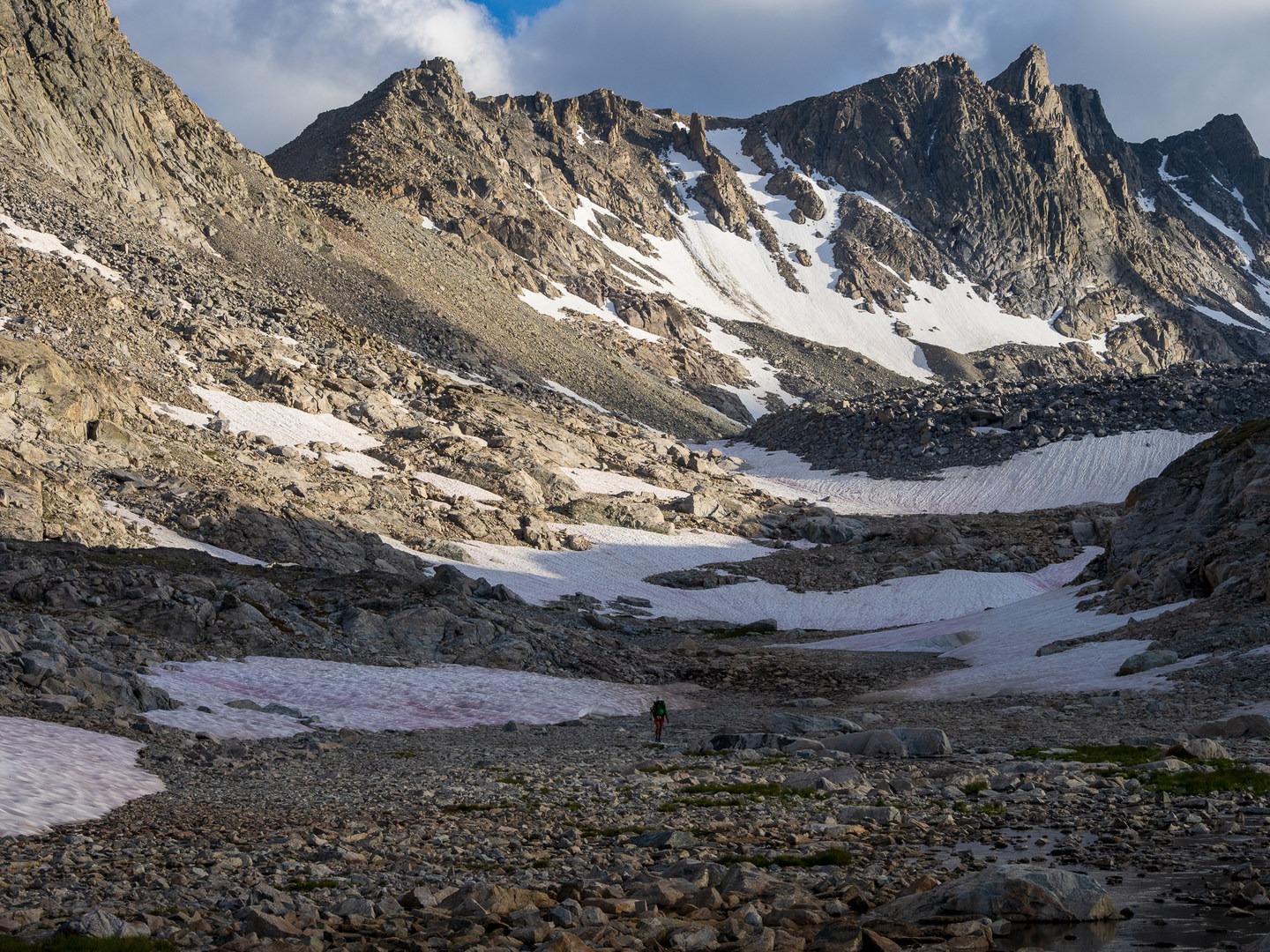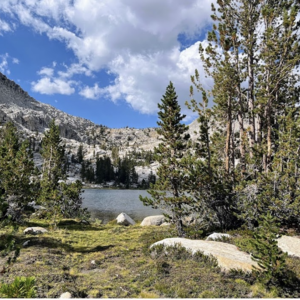You are here
The Wind River High Route stretches nearly 100 miles across the stunning Wind River Range of Wyoming. It is arguably the finest high alpine route in the country. Along the way it spends 65 miles off trail, climbs nine mountain passes, traverses two glaciers and summits two 13,000’ peaks. While not technically challenging (nothing exceeds class 3 terrain) the route is extremely difficult. It is not for novice backpackers - hikers must be experienced with off trail travel and route finding, and be prepared to spend over a week in the remote Wind Rivers where the weather can change on a dime and the nearest bail out point is often more than a day’s hike away. The description below provides a brief overview, but is not a substitute for the official guide and map set by Andrew Skurka (available here).
Section 3 of the Wind River High Route begins from Middle Fork Lake. This section is arguably the most beautiful, but to enjoy the beauty one has to put in some work. 89% of Section 3 is off trail, and the section features 738 vertical feet of elevation change per mile. The section also passes through 5.5 miles of the Wind River Indian Reservation which you’ll need to have secured a permit in advance to legally pass through.
From Middle Fork Lake the route climbs steeply up to Bewmark Lake. From here it’s a surprisingly gentle climb up a use trail to Photo Pass. The views from the pass, as you may expect from the name, are incredible.
The descent from Photo Pass isn’t quite as enjoyable. There is a use trail but it is steep and long. You’ll descend to the beautiful valley then work your way through the forest before finding your way west and climbing up toward Europe Peak.
A short class 3 scramble leads up to Europe Peak, where a fantastic ridge walk along the Continental Divide awaits. If weather is bad, one can opt for the Halls Lake or Milky Lakes low route instead.
Next are the Golden Lakes where there is some great camping (honestly, the last good protected camping of the entire route). You’ll climb past the series of lakes, over insignificant Camp Pass, then to Lake 10787.
Douglas Peak Pass is next and looks quite intimidating, but the route up is decent and stays to the right side near the cliff wall. From the top is a stunning view down to Alpine Lakes Basin.
The descent from Douglas Peak Pass is steep and loose. The next challenge is crossing Alpine Lakes Basin. The basin is entirely rocks, with the hiking being very slow and tedious. Expect to move at a maximum speed of 1 MPH. The basin is stunning however.
You’ll then climb up Alpine Lakes Pass to exit the basin. This requires some class 3 moves to get around the upper lake, then a large snowfield that may either be a hindrance or make travel faster depending on conditions and your comfort level on snow.
From the top is an absolutely stunning view of the massive peaks and glaciers ahead. The hiking gets much easier as you descend. After descending the valley, then climbing up a notch, you’ll again descend to North Fork Bull Lake Creek. This is a beautiful turquoise blue glacier fed stream.
As you head toward Blaurock Pass the views are magnificent. A big climb up the pass then awaits (its’ the second largest climb of the entire high route). From the top you’ll be rewarded with a stunning, up-close view of Gannett Peak (the highest point in the range, and Wyoming).
Descend from the pass to Dinwoody Creek. This marks the end of Section 3. There is also some exposed camping available, about the best you’ll find for the next 20 miles.

















Comments
Sign In and share them.